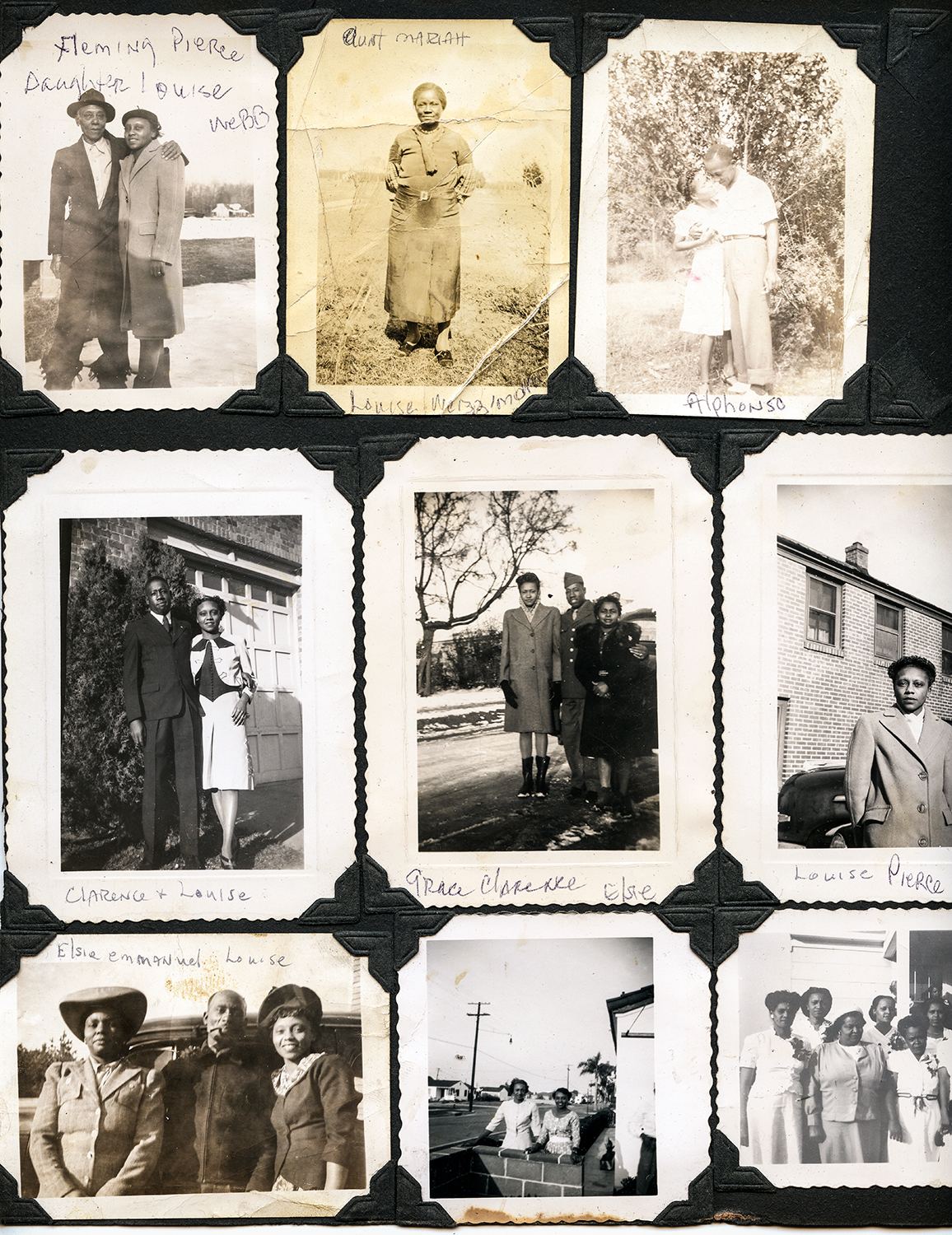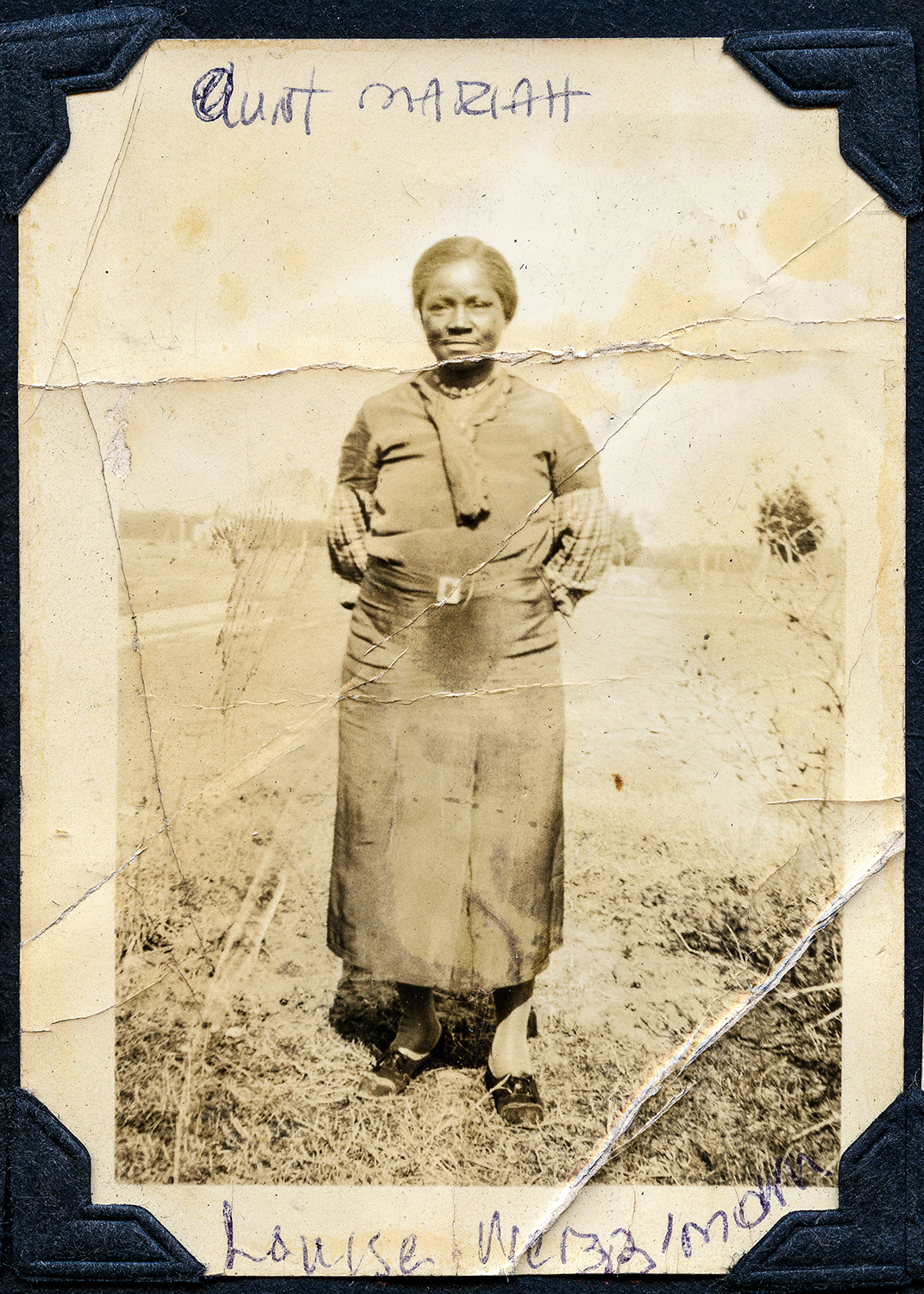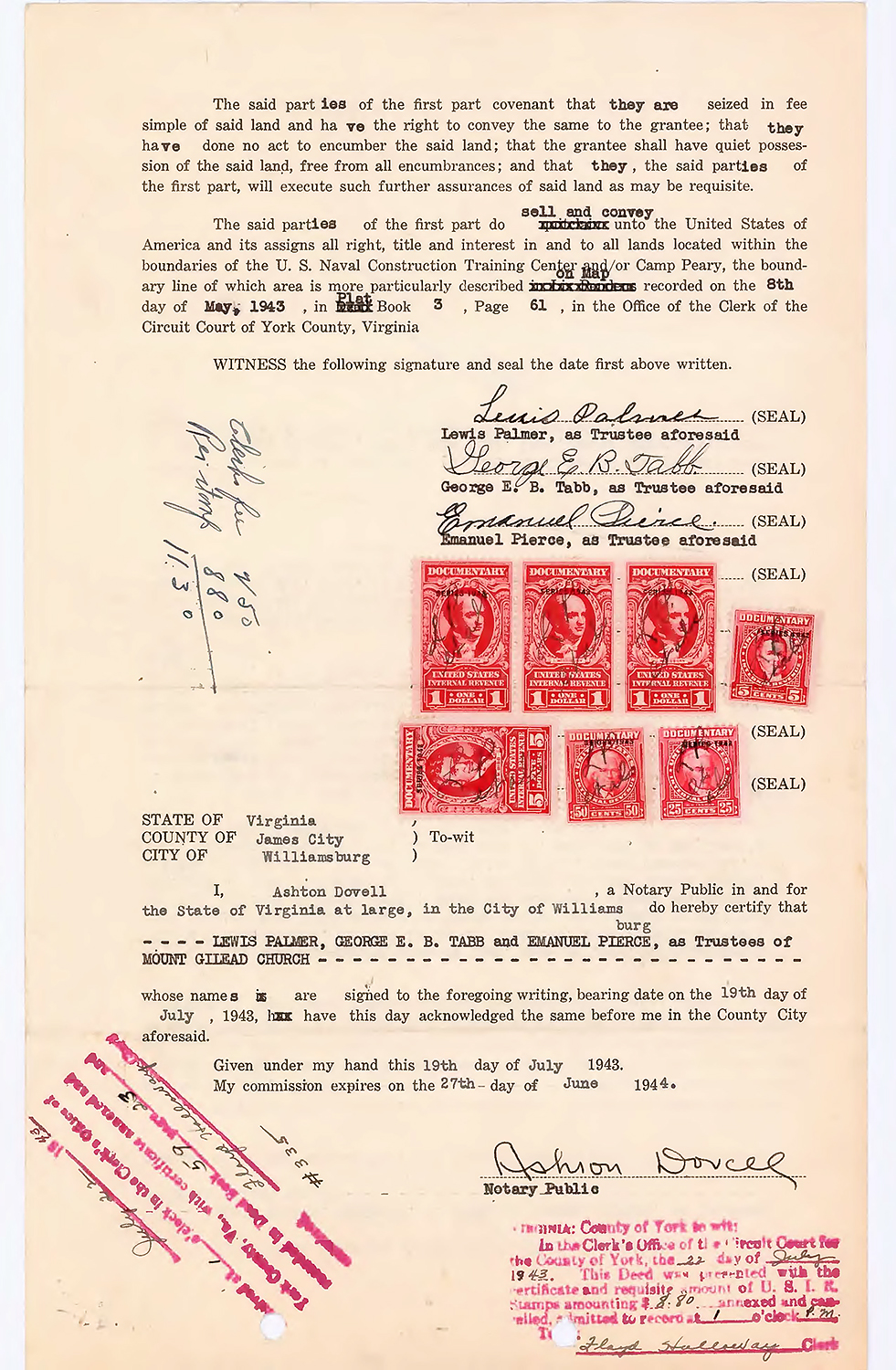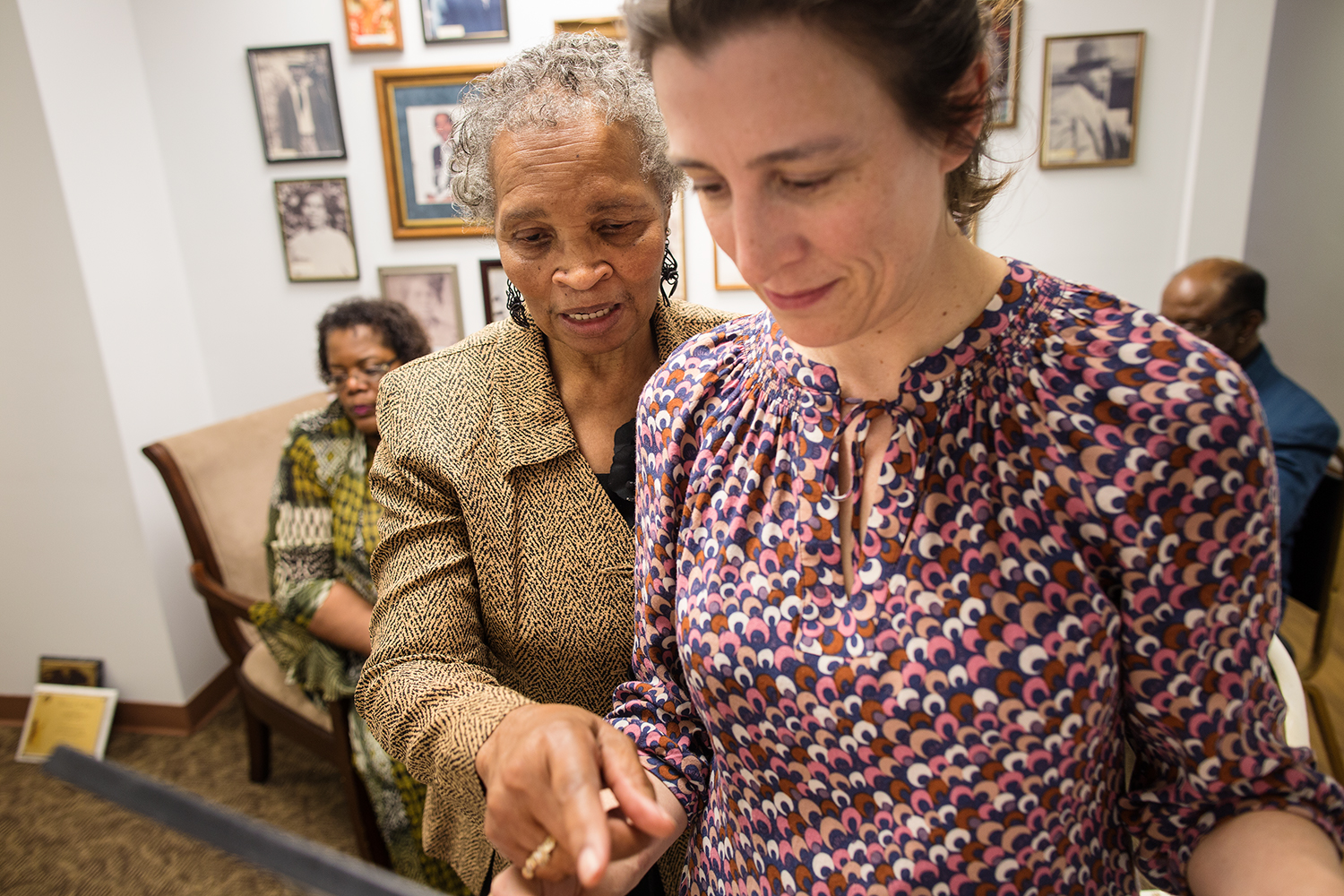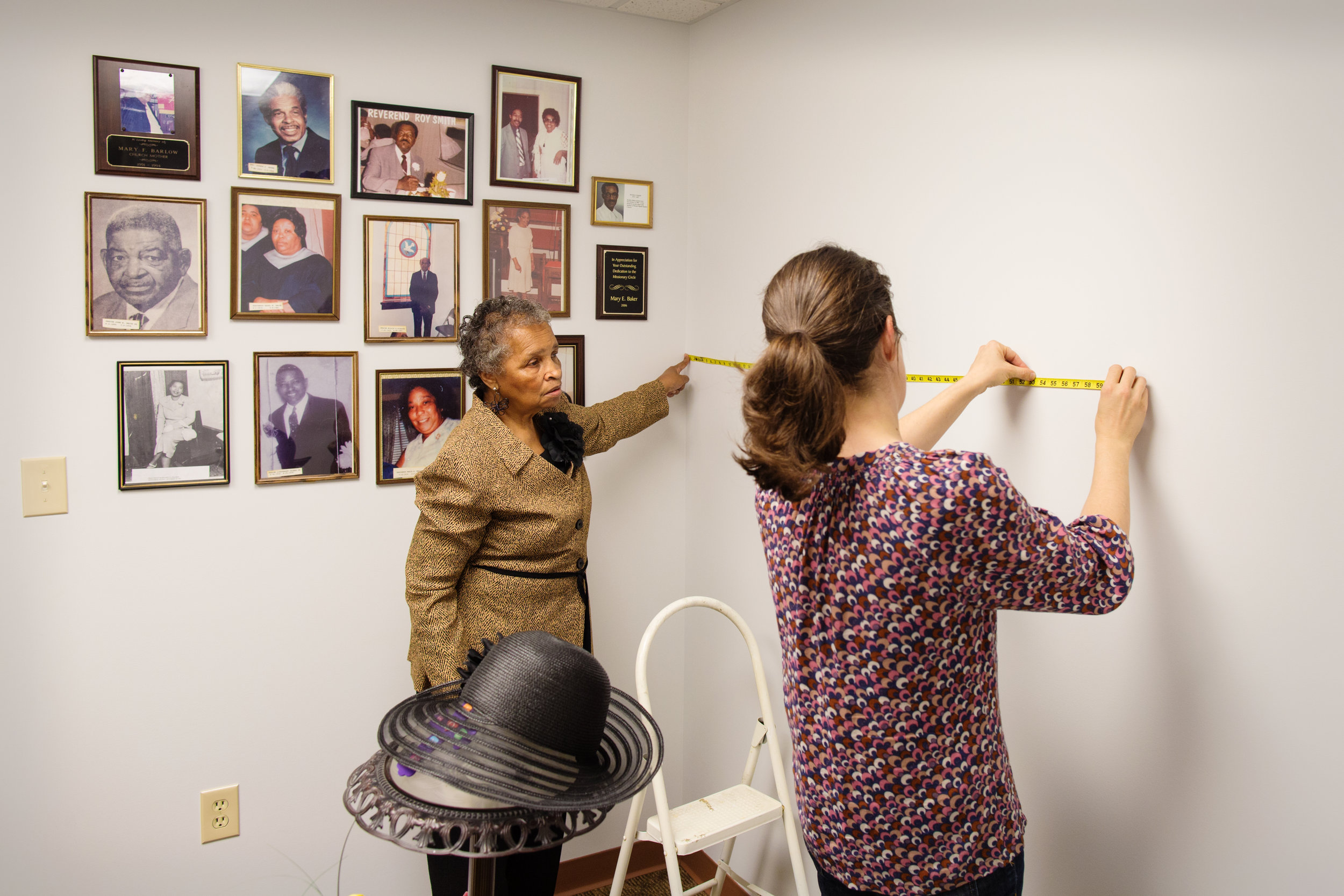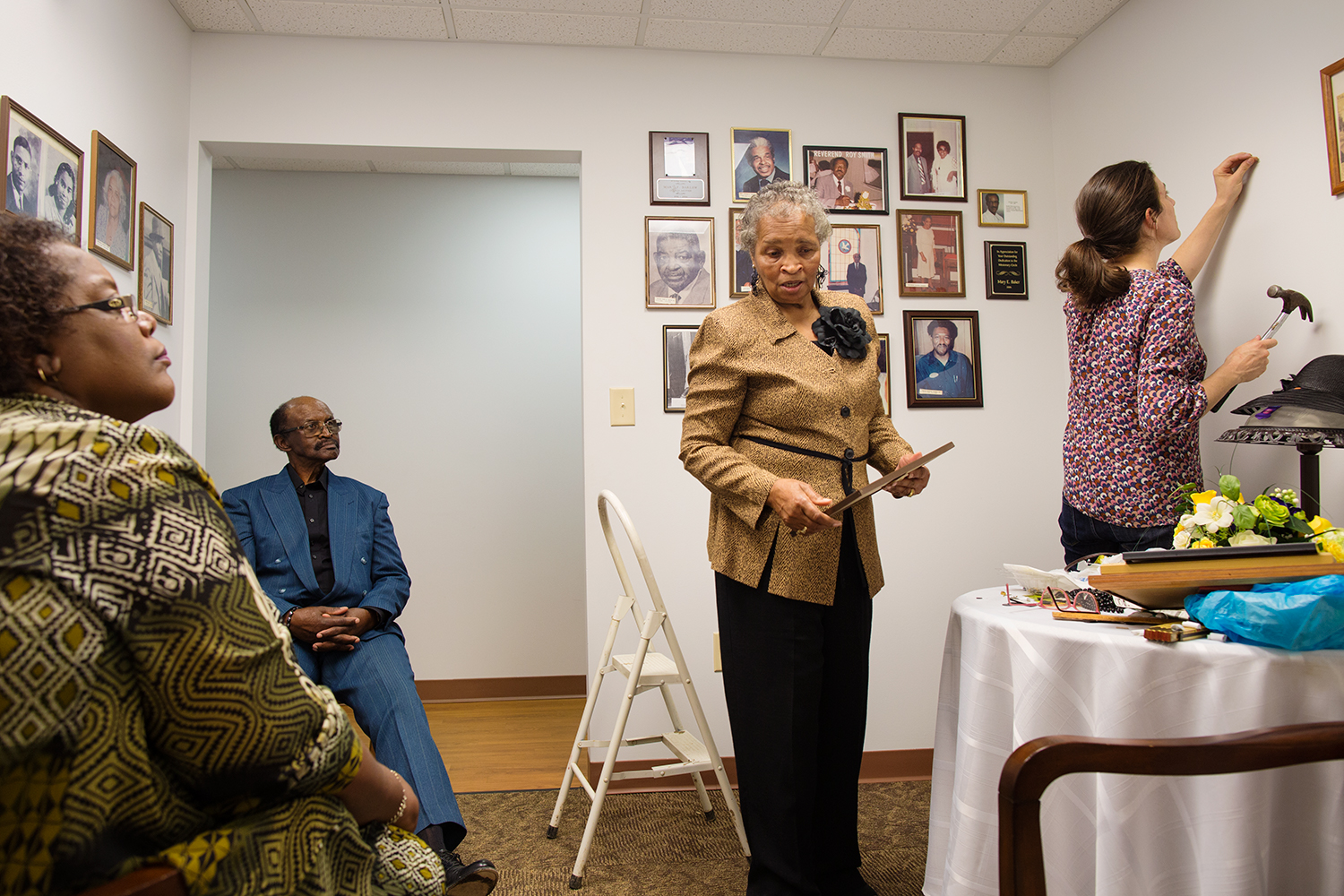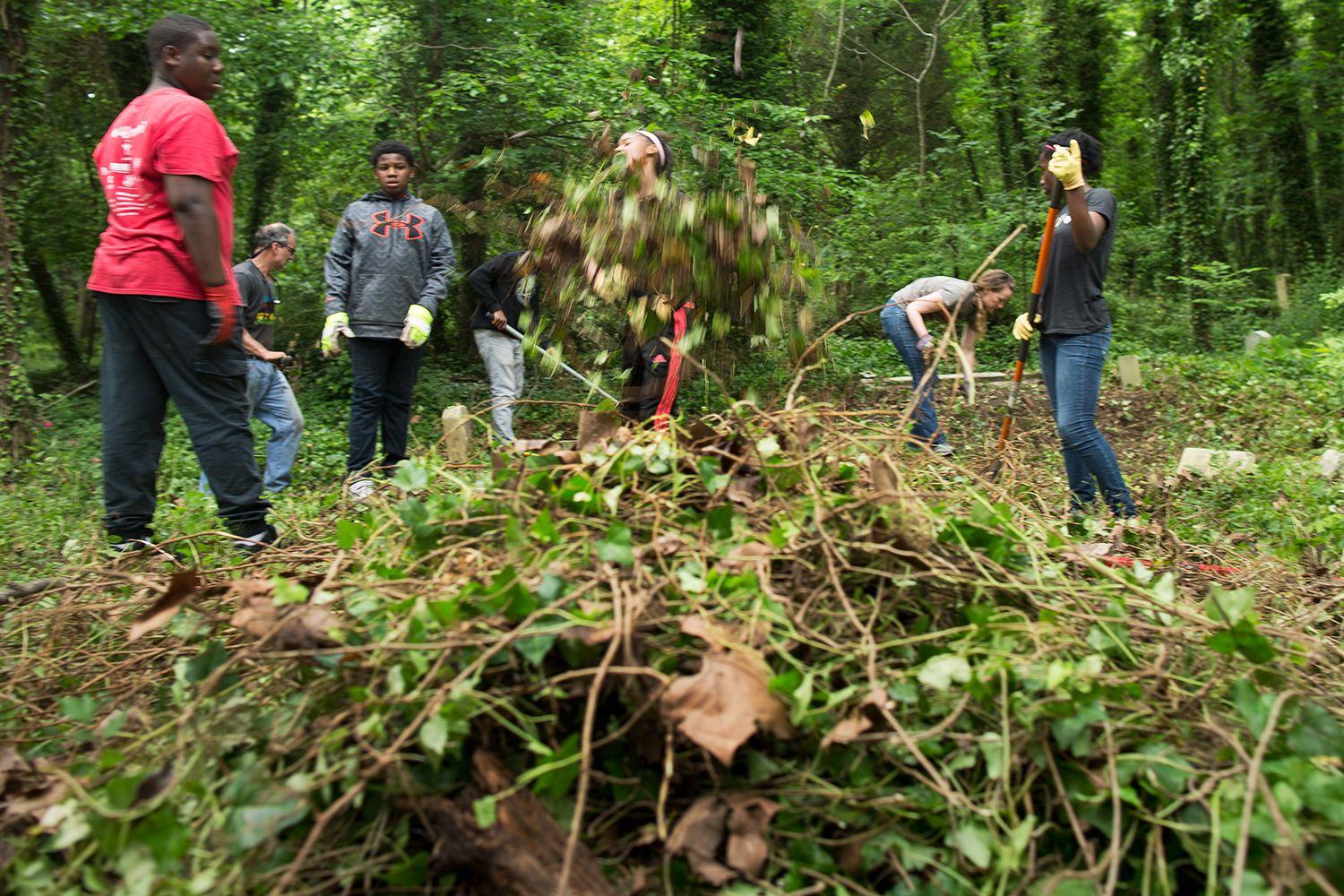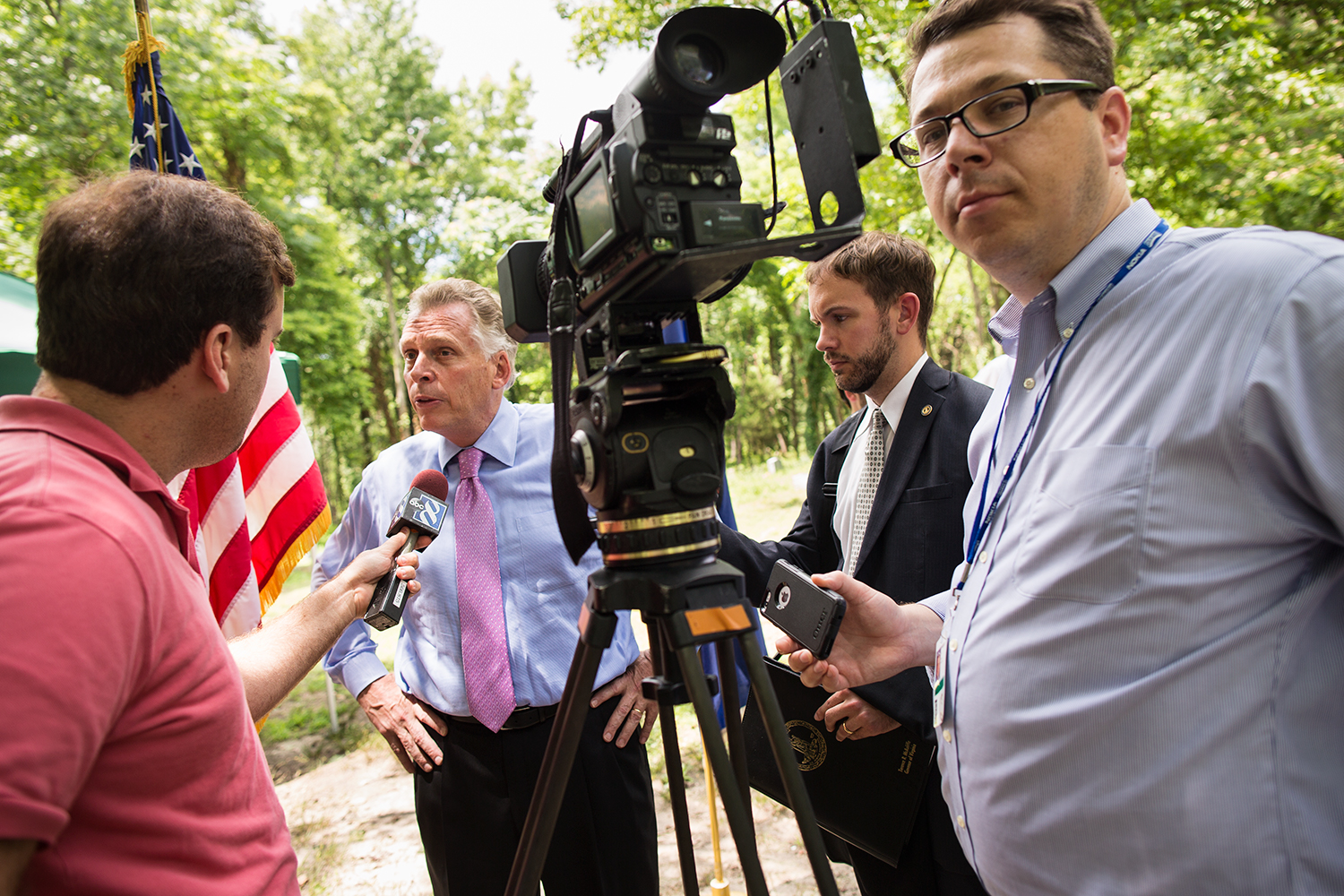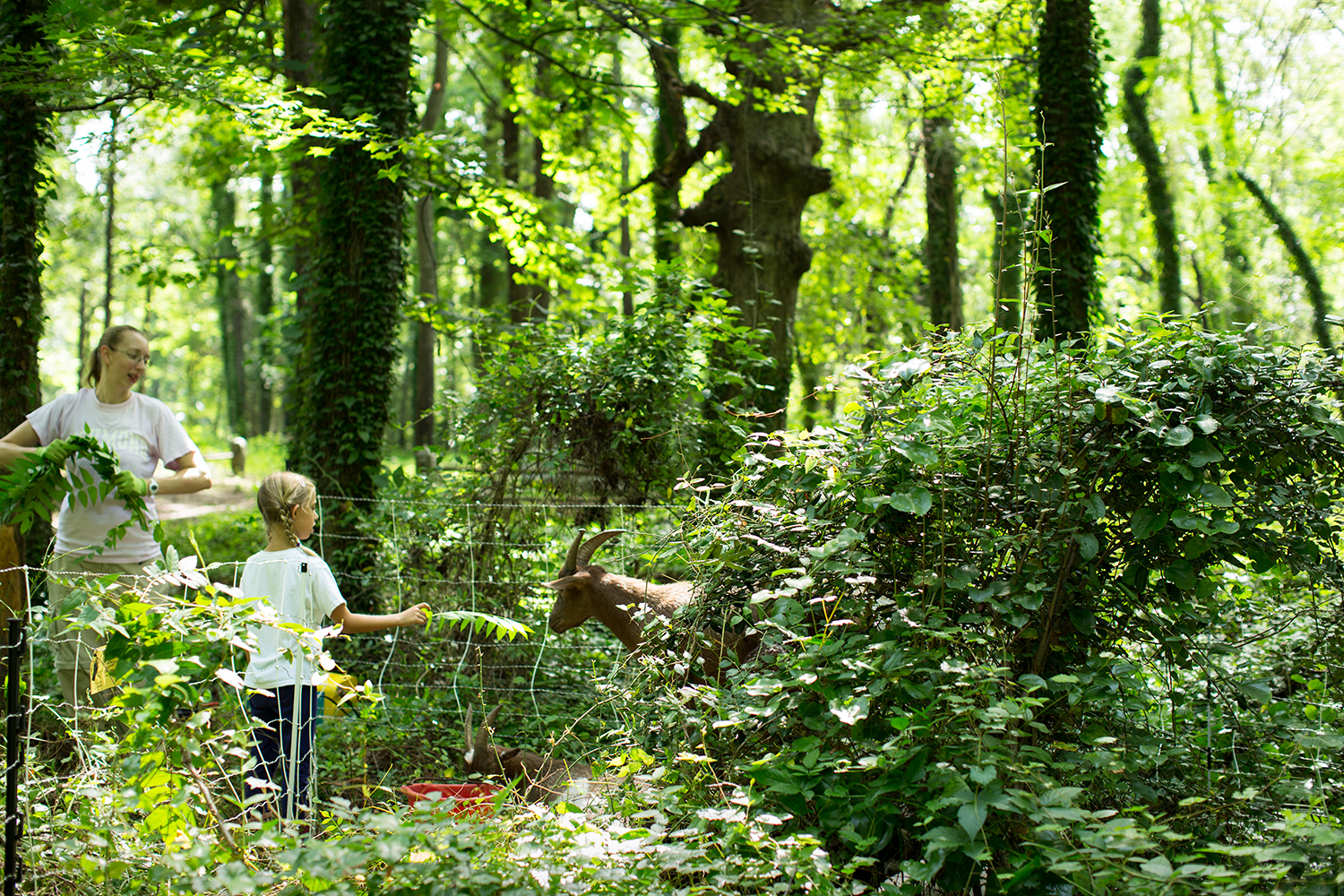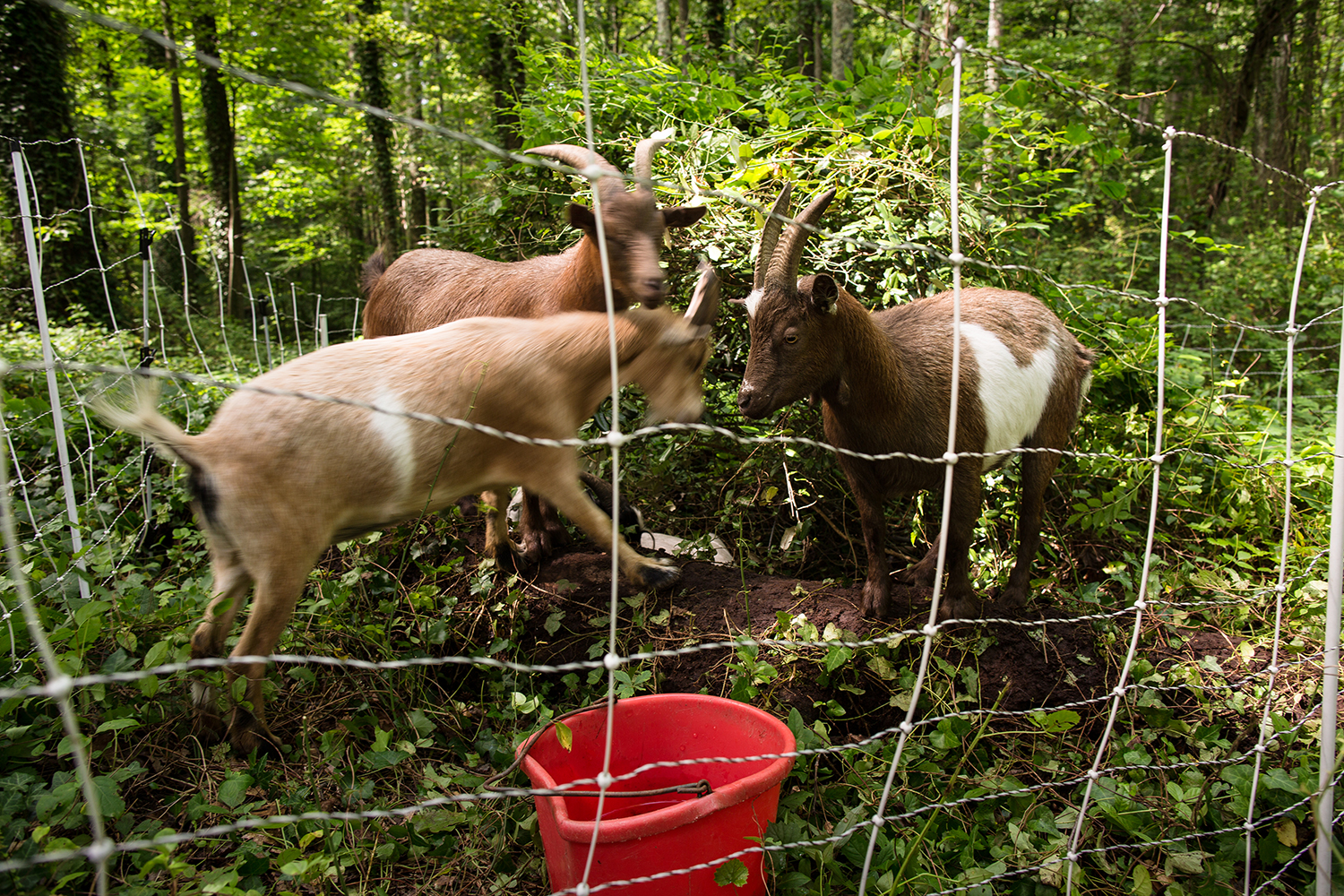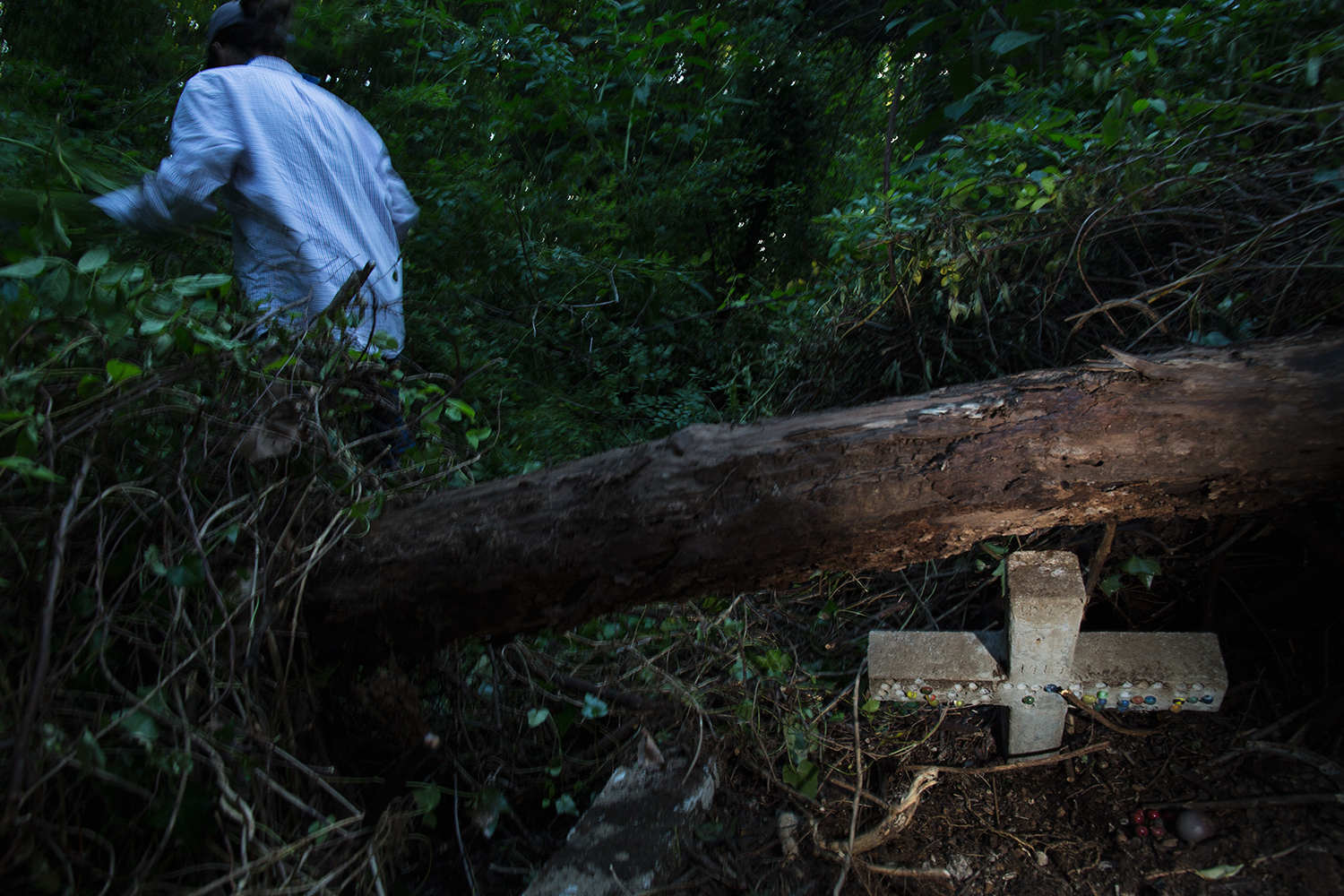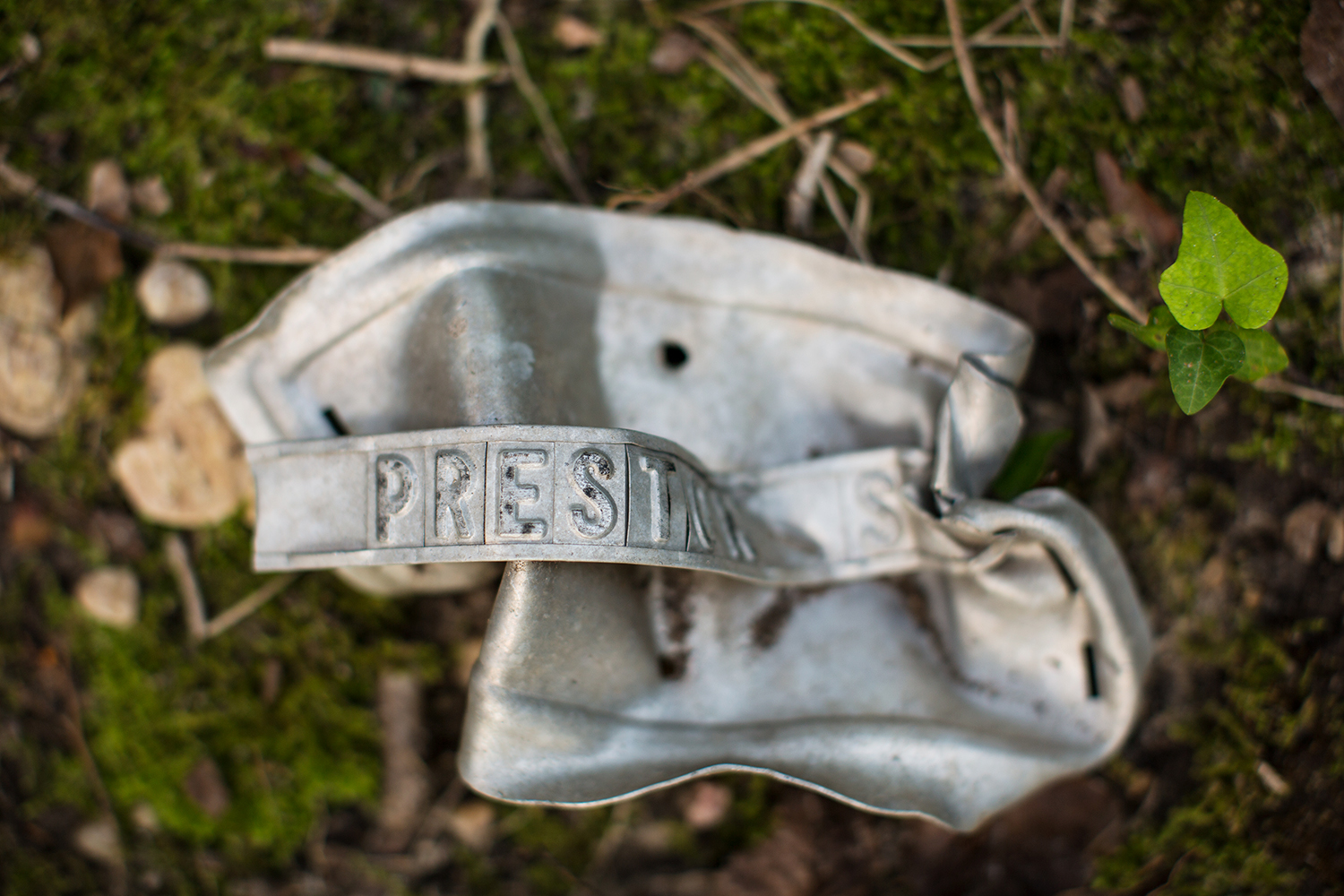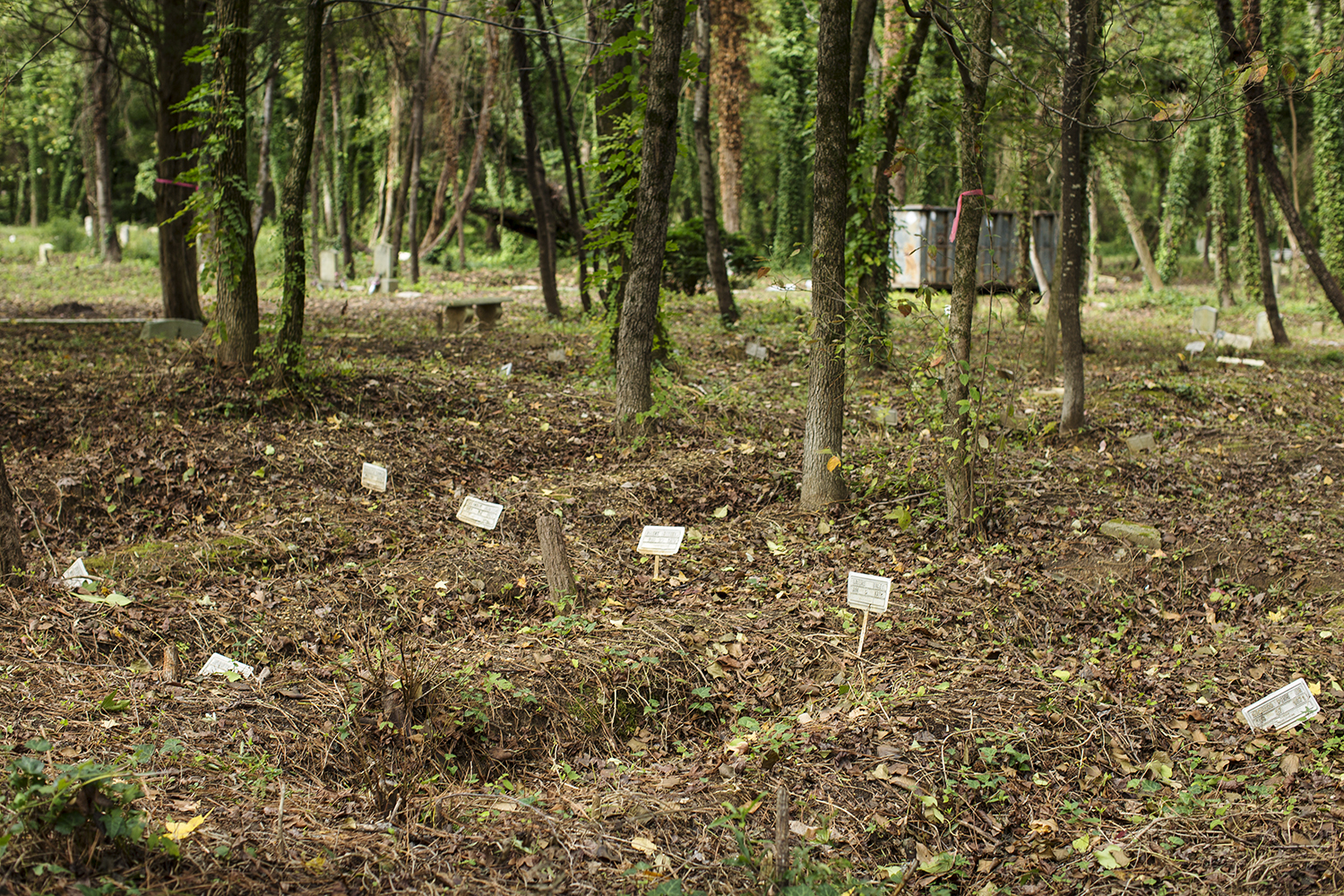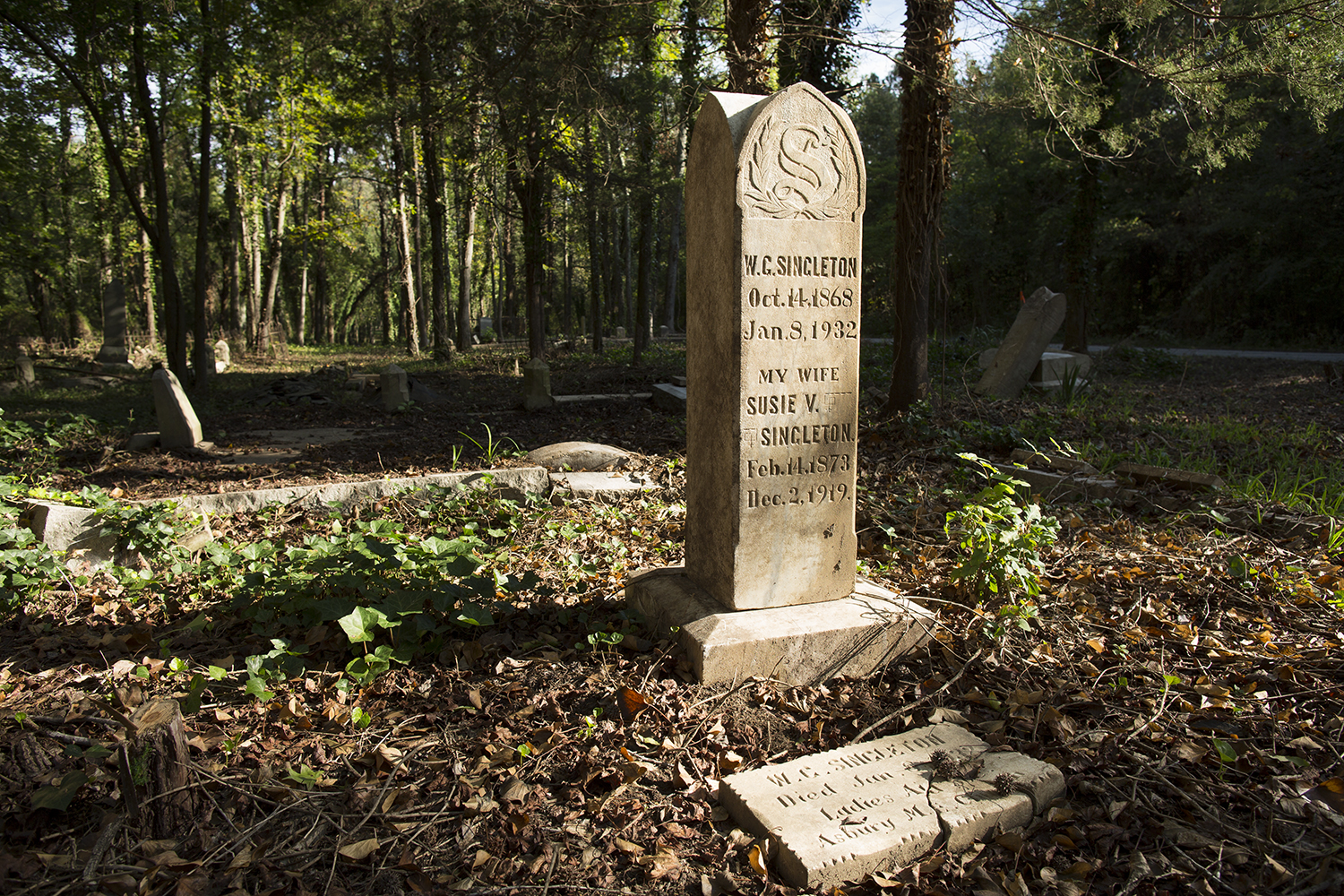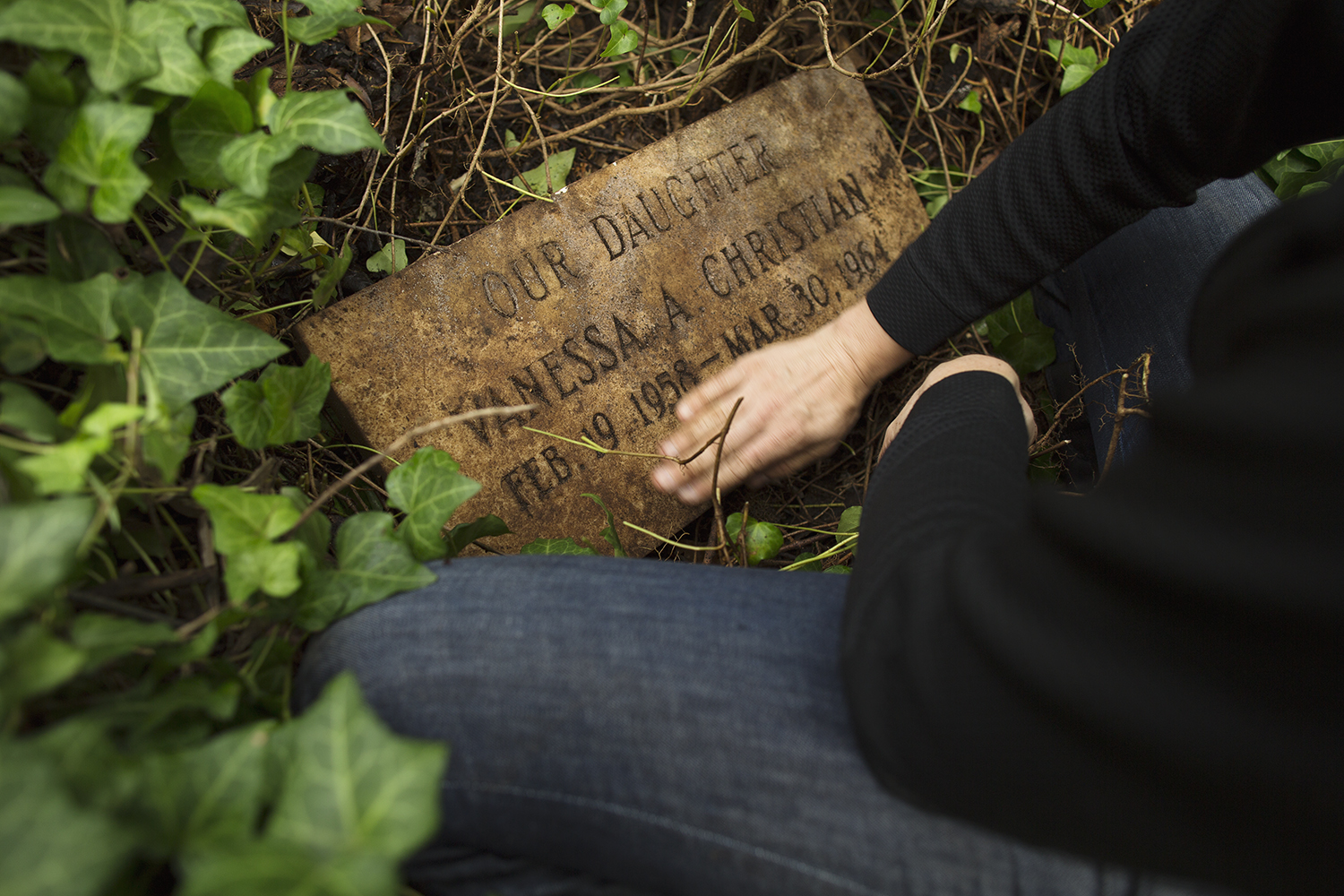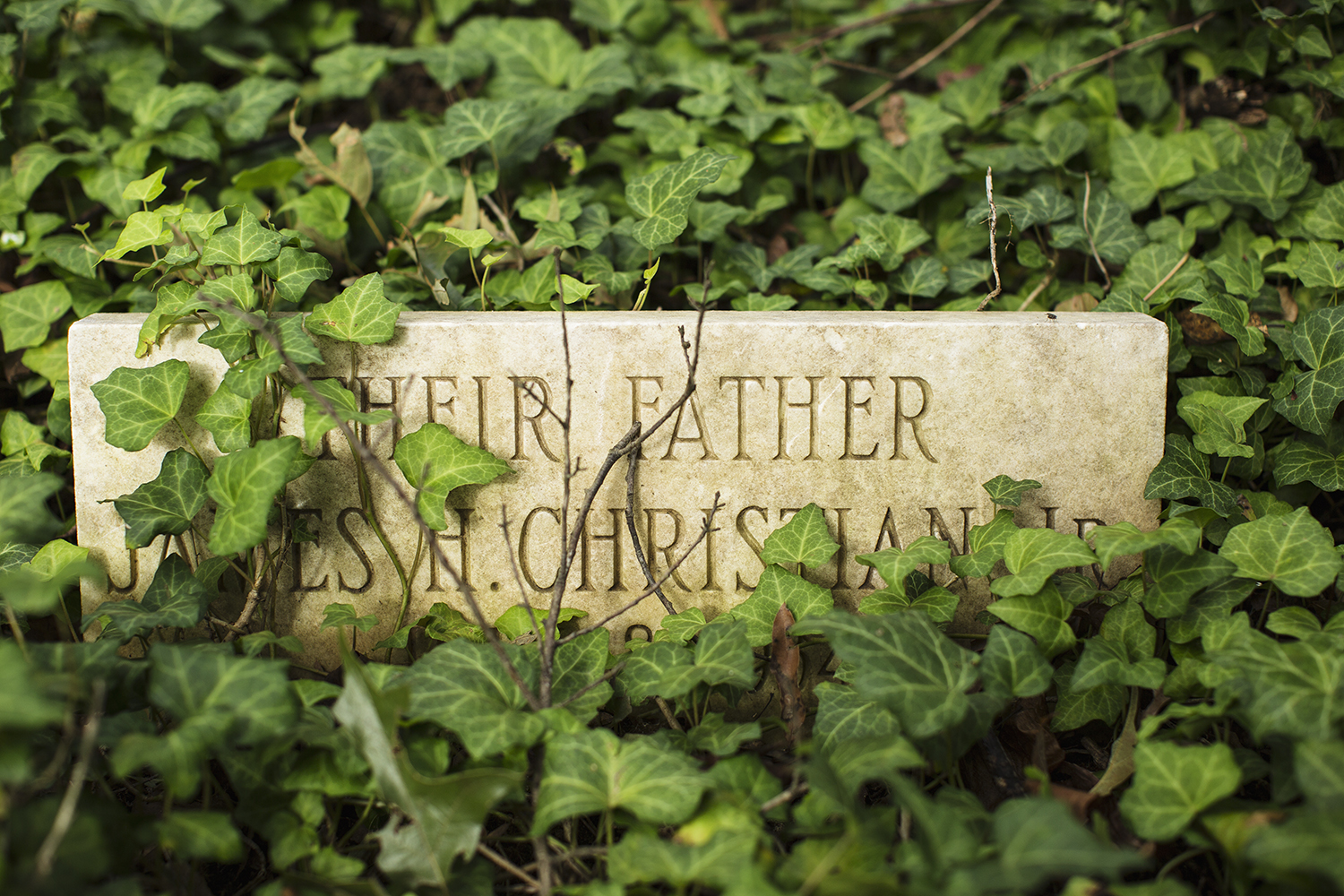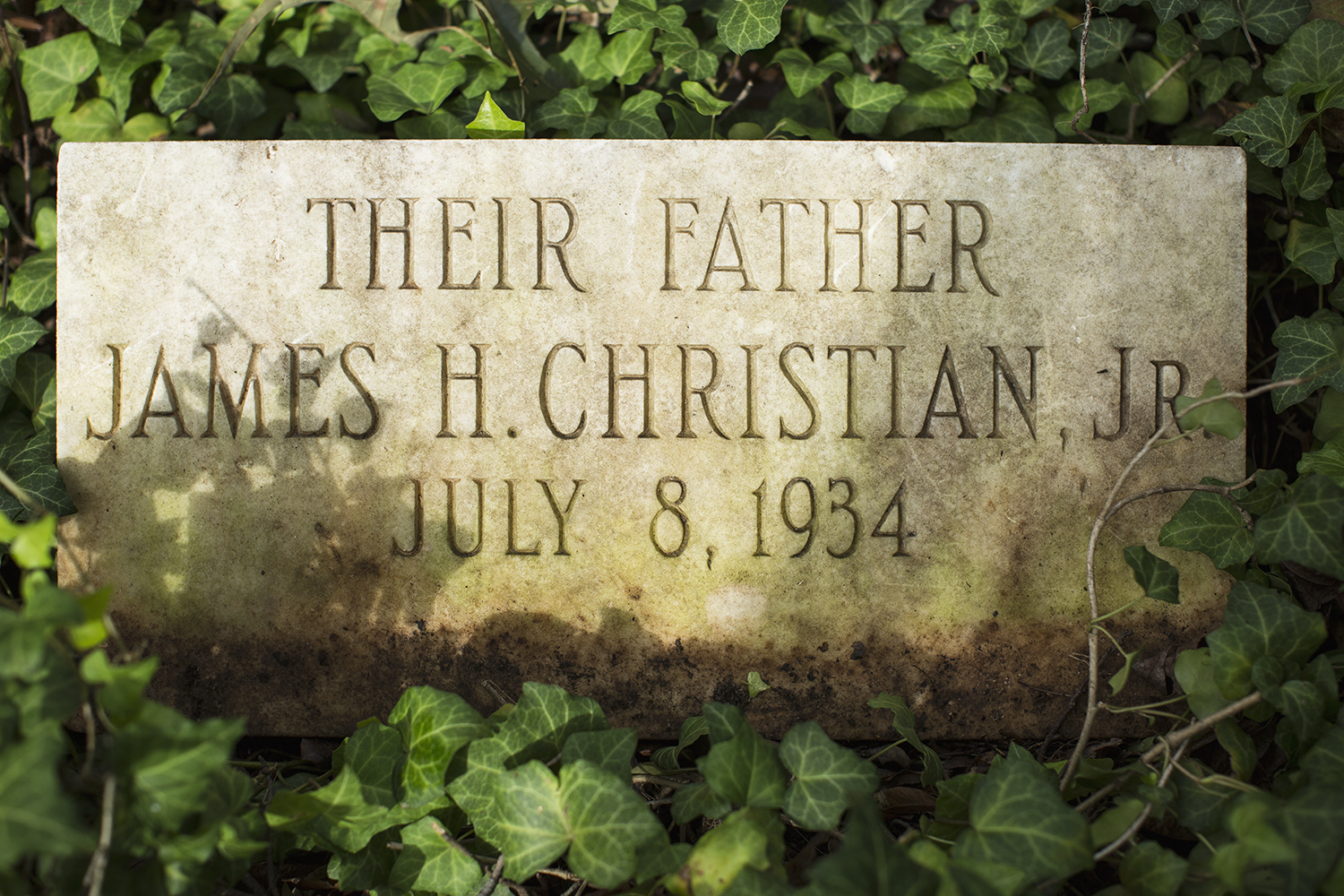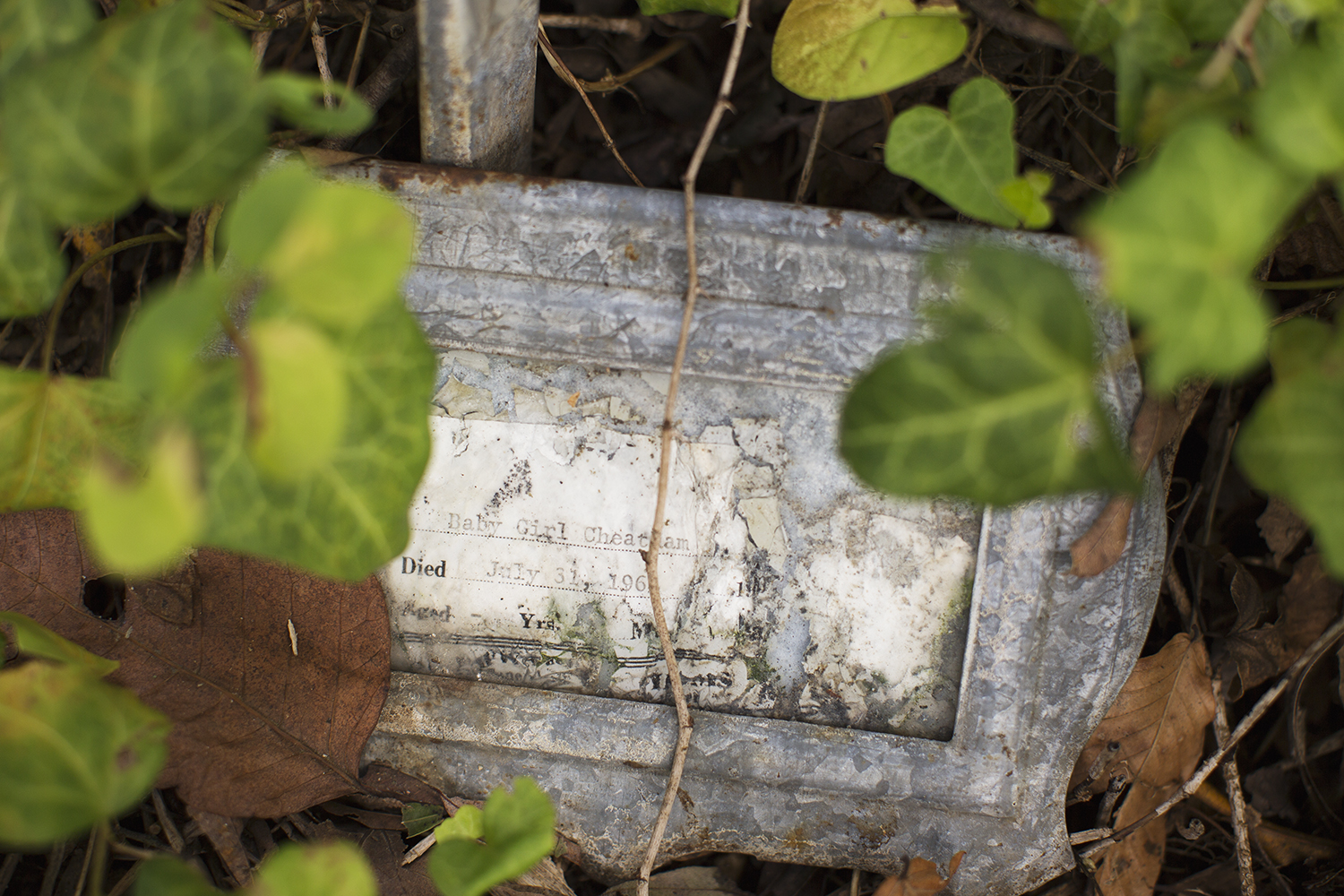African American
It's the Looking That Matters: An Update on the Documentary /
I wonder some days—and almost every night as I try to sleep—if we’ll ever collect enough information and pictures to tell a solid story about Magruder and the everyday pioneers who built it. So much of that history has been erased—or was never recorded.
We have found precious pieces of evidence and information in the four years that we’ve been working on Make the Ground Talk. Archivists helped us unearth my great-grandfather Mat Palmer’s Union pension application. From that collection of papers, we gleaned a heap of vital facts, chief among them that Mat had been enslaved and that his last owner was a man named Alexander Maben Hobson.
Our cousin Ann led us to the photo of Mat on the wall of Mt. Pilgrim Baptist Church. Through the Freedom of Information Act, we have obtained government documents relating to the 1942 eviction. At Camp Peary, we visited the graves of Mat and Julia Palmer and other Magruderites at Old Orchard Cemetery.
Scanning her way through thousands of pages, digital and paper, Erin found connections to both sides in the Civil War. We visited the neighborhood where her great-grandparents, descendants of Confederates, lived in Gadsden, Alabama, and found the grave of their (and Erin’s) forebear, “H. M. Stripling Confederate Soldier,” a few counties and one state line east, in Rome, Georgia.
The finding is fantastic. Tracking down each piece of information and visiting each place after months of researching and puzzling, feels wonderful, electric.
For a few moments, we imagine that we’ve cracked the code. Maybe the story will fall into place because we have found this one fragment. And then we settle down.
The finding is rare. Long stretches of nothing—or nothing significant—pass now that we have found the low-hanging fruit, and I gather much of the mid-hanging fruit, too. Digging through archives and attics, poring over microfilm, and poking around cemeteries that just may offer some clues gets old, tedious, frustrating. And although we have found good material, the gaps in the puzzle—of Magruder and the lives of Mat and Julia Palmer—are still larger than the collection of pieces that we have assembled.
Massive questions remain. There is little trace of Julia in the historical record. There are maddening holes in Mat’s story—among them, what made him choose to settle in York County, Virginia, after serving in the Civil War? When did he live in Richmond, as his Union pension application says he did? Why do facts about the “Mathew Palmer” living in Richmond who we find in the census not match up with what we know about our Mat? What have we got wrong? And what have we got right?
In doing all of this hunting and pecking, we have learned a lot about ourselves, about history—Virginian, African American, American—and we have found that others are searching along the same lines. And we have learned one lesson that now sustains us: It’s the looking that matters.
The looking—the process of researching, visiting, interviewing—itself strengthens and affirms our faith in the power of our past and in the people whose stories we’re telling. And we have become part of a diverse and diffuse community of searchers, amateur and professional, gathering textual and physical fragments that allow us to tell truer stories of the American past.
All this to say that our looking goes on and will continue for at least another couple of years. We are assembling the pieces of the documentary film, slowly, with guidance from our advisers, family, and friends. I can’t say when the doc will be complete. I have tried this before and been very wrong. But I will say that we have left Brooklyn and bought a house in Richmond, in Church Hill, where we have rented for two years. We’re committed to this project, to this process, the people and history we are researching, and our new friends, colleagues, and neighbors. We’ll be sending out periodic updates such as this one to give people a better sense of our progress. —BP
Summering at the Cemetery /
We've been back in Virginia full-time since Memorial Day weekend, settling into our RVA rhythm after four-plus months in New York. We never expected to be Richmonders, but we're increasingly at home here—returning felt right. A big part of that is our work at East End Cemetery, which has connected us to people, places, and history we might never have known.
And so much has happened since we've been back! Seemingly out of the blue, the Virginia Outdoors Foundation, a state-chartered agency, awarded East End and neighboring Evergreen a $400,000 grant—seed money for their preservation in perpetuity. The following week, VA Governor Terry McAuliffe made a statement at the cemetery in support of the grant. That was a surreal moment. (When a fellow volunteer asked Thomas Taylor, who has maintained his family's plot for decades, whether he ever thought a sitting governor would visit East End, he said, with a wry laugh and not a moment's hesitation, "Only if he was being buried here.")
On the same day McAuliffe came, a mini-herd of goats from Bright Hope Farm & Apiary arrived on the scene, part of a trial to see whether the voracious nibblers can help us tame some of the rampant overgrowth that still obscures much of the cemetery. Over the course of several days, other goats were cycled in and managed to pack away a goodly patch of greenery.
Meanwhile, we've continued our documentation of the cleanup effort. Buzzfeed recently published a gallery of Brian's photographs with a piece he wrote about recent developments at East End. It's hovering around 100K views—so keep clicking!
Back At It /
We spent a couple of hours at East End this morning. The interminable rain had kept us away for several weeks. Erin had been out more recently than I. I have been wrapped up in deadlines and nursing an aching back—I must learn a new technique for root-wrenching and stump-pulling.
The sun was brilliant today and we were alone, for the most part. A car leaving neighboring Evergreen Cemetery on the access road passed by slowly as we walked in the section of East End that straddles the Richmond–Henrico County border. The driver, a man or woman sunk deep into the seat—perhaps just a really short person—drove on without looking.
We visited today to photograph a headstone for a Richmond couple we met last week, at our exhibition. They share a family name with the deceased. They have people buried at Evergreen, but they knew nothing of this particular (possible) relation interred at East End. We offered to send them the photo. Erin promised to do some research, online and at the Library of Virginia.
I got stung by a yellow jacket through my pants as Erin unearthed a grave stone. She found others and temporary markers, too. A number of these were for children. We know that they died a long time ago—six-year-old Vanessa Christian passed away in 1964, a few months before I was born—but we always feel a wave of sadness when we find them. Erin may write more about this.
I have never been able to photograph the depressions that corrugate some sections of the cemetery, graves marked and unmarked, to my satisfaction. I tried again today. They remind me of the graves at Old Orchard Cemetery at Camp Peary, the first place I truly noticed these casket-shaped troughs. We will probably never learn who is buried there.
The shapes in the ground force me to visualize a coffin, which sends my thoughts toward funerals, real and imagined. As I child, frightened of anything having to do with death, I would have been pants-wetting terrified of these dips in the earth. Now, I tread lightly around them, respectfully, but also curiously. The souls at rest under my feet have stories.
Among the Living … At the Cemetery /
A dark gray Ford SUV slow-rolled up Evergreen Road, softly crunching gravel. Odd, and little scary. Not many folks travel Evergreen. It’s a dirt road that leads to nothing but cemeteries.
Hunters scouting the area for a little late afternoon poaching, I figured, or cops.
I dropped the vine I was tugging on, and looked toward the front passenger-side window, which was sliding down. I got up and walked toward the truck. Cautiously, I peeked into the window. A man, big and brown, wearing green, leaned toward me. “Mr. Palmer?” he asked.
Captain Milt Robinson told me on the phone that he might drop by on a cemetery cleanup day, and he did. Robinson oversees Henrico County and Richmond for Virginia’s Department of Game and Inland Fisheries.
I gathered at his truck with a couple of other volunteers. Robinson told us he wanted to see the area for himself. “We don’t want to go behind Henrico Police and investigate their investigation,” he said. There's interagency cooperation and professional etiquette to worry about. And then, of course, there's general principle: Cops stick together. I get it. My grandfather was a cop, proud of it. He did 20 years in the NYPD, 1936 to 1956, much of it walking a beat in Harlem.
Robinson said he’d consider increasing patrols out here for the next hunting season. Then he excused himself to explore. We all went back to digging, sawing, and pulling.
As the sun started to set, I schlepped our gardening—degardening, in this case—tools back to coordinator John Shuck’s pickup. I put my cameras in our car, and then I walked to Robinson’s truck. He had parked between us—we were working near the main road—and the gate to Evergreen Cemetery. I assumed he’d be nestled in his seat, typing notes into the laptop mounted in the cab. But he wasn’t, so I walked into the woods, or what looked like woods until I took three steps off the road. Every few feet, there were headstones. This was precisely the area where we'd seen the hunters just weeks before.
I couldn't track him down, so we left. I called him later that evening. Robinson told me he'd been looking around, as promised. He said he’d stopped at Maggie Walker’s grave before leaving.

